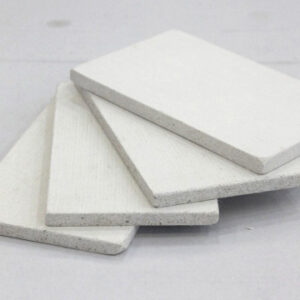
Yes, Magnesium Oxide (MgO) board can be corrosive to metal fasteners and framing, but the risk largely depends on the board’s composition and the environmental conditions.
The primary factor is the presence of magnesium chloride as a binding agent, which is common in traditional or lower-quality MgO boards.
The Cause of Corrosion
The corrosion risk stems from the chloride content in the board:
- Chloride Content: Traditional MgO boards often use magnesium chloride in their production.
- Moisture Absorption: Chloride salts are hygroscopic, meaning they readily absorb moisture from the air, especially in high humidity environments. This phenomenon is often called “weeping” or “sweating.”
- Corrosive Leachate: When the chloride salts absorb moisture, they dissolve and form a highly corrosive, salty liquid (leachate) that migrates to the board’s surface and contacts nearby metals.
- Metal Degradation: This chloride-rich liquid aggressively corrodes non-stainless steel fasteners (like galvanized steel) and metal framing, leading to rust, reduced structural integrity, and product failure
Non-Corrosive MGO Alternatives
To address this significant drawback, a newer, non-corrosive formulation has been developed:
| MGO Board Type | Binding Agent | Corrosion Risk | Moisture Behavior |
| Traditional/Standard | Magnesium Chloride | High (especially in humid/wet conditions) | Highly hygroscopic, prone to “weeping” corrosive liquid. |
| Chloride-Free/Sulfate | Magnesium Sulfate | Very Low/None | Non-hygroscopic, stable, and eliminates the risk of chloride-induced corrosion. |
Chloride-free MGO boards, which use (magnesium sulfate), are designed to be non-corrosive to metals, even in humid conditions
Best Practices for Metal Compatibility
If you are using or specifying any type of MGO board, you can mitigate the corrosion risk by taking precautions with the metal components:
- Select Chloride-Free Boards: Prioritize boards manufactured using magnesium sulfate to eliminate the source of the corrosive agent.
- Use Corrosion-Resistant Fasteners: Always use high-grade, corrosion-resistant metals for fasteners and connecting metal parts:
- Stainless Steel (304 or 316 grade) is highly recommended, especially in wet or exterior applications.
- Coated Fasteners with epoxy, ceramic, or thick zinc-rich base layers are also used. Soft galvanized coatings should be avoided as the chloride can erode the zinc.
- Ensure Proper Installation and Protection: Protect the boards from long-term saturation by using proper flashing, coatings, and membranes, as moisture is what activates the corrosive potential of any remaining chlorides
OCT
2025
